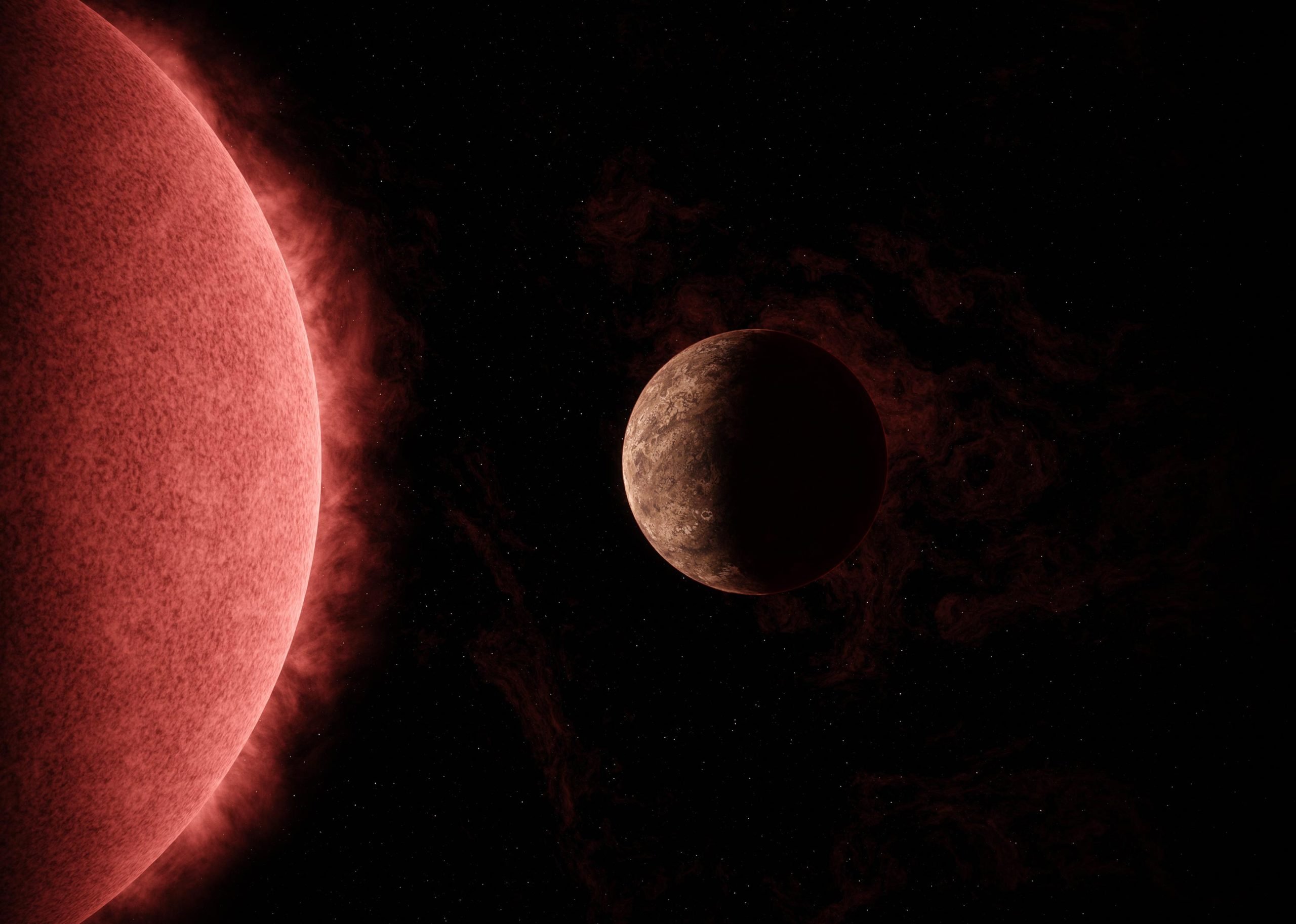 Reference: Visit website
Reference: Visit websiteArtist⁘s view of exoplanet SPECULOOS-3 b orbiting its star. The planet is as big as the Earth, while its star is slightly larger than Jupiter, but much more massive. Credit: NASA/JPL-Caltech
Astronomers have discovered an Earth-sized planet, SPECULOOS-3 b, orbiting an ultra-cool red dwarf star just 55 light years away. This tidally locked planet, which completes an orbit every 17 hours, was found by the international SPECULOOS project using a network of robotic telescopes.
The planet is only the second of its kind to be discovered around this type of star. Called SPECULOOS-3 b, it takes around 17 hours to complete an orbit of the star which is more than twice as cold as our sun, as well as ten times less massive and a hundred times less luminous.
Days and nights on SPECULOOS-3 b seem to be endless: the exoplanet is likely to be tidally locked, so the same side ⁘ the ⁘dayside⁘ ⁘ always faces the star in a relationship similar to our moon and Earth.
The discovery, published on May 15, 2024, in the journal Nature Astronomy , was made by the SPECULOOS project, which is led by the University of Li⁘ge, in Belgium, in collaboration with the Universities of Birmingham, Cambridge, Bern, and the Massachusetts Institute of Technology. SPECULOOS (Search for Planets EClipsing ULtra-cOOl Stars) was established to search for exoplanets orbiting ultra-cool dwarf stars using a network of robotic telescopes based around the world.
Ultra-cool dwarf stars are extremely common, making up around 70% of the stars in the Milky Way . But they are also very faint and scattered across the sky, so scientists have to observe data from telescopes over several weeks, monitoring each star individually to detect transiting planets.
No comments:
Post a Comment